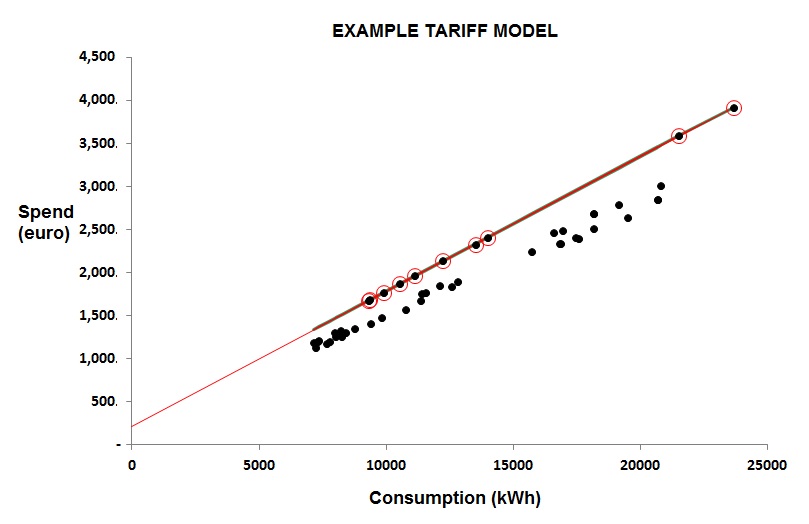One of my current projects is to help someone with an international estate to forecast their monthly energy consumption and hence develop a monthly budget profile. Their budgetary control will be that much tighter because it has seasonality built in to it in a realistic fashion.
Predicting kWh consumptions at site level is reasonably straightforward because one can use regression analysis against appropriate heating and cooling degree-day values, and then extrapolate using (say) ten-year average figures for each month. The difficulty comes in translating predicted consumptions into costs. To do this rigorously one would mimic the tariff model for each account but apart from being laborious this method needs inputs relating to peak demand and other variables, and it presumes being able to get information from local managers in a timely manner. To get around these practical difficulties I have been trying a different approach. Using monthly book-keeping figures I analysed, in each case, the variation in spend against the variation in consumption. Gratifyingly, nearly all the accounts I looked at displayed a straight-line relationship, i.e., a certain fixed monthly spend plus a flat rate per kWh. Although these were only approximations, many of them were accurate to half a percent or so. Here is an example in which the highlighted points represent the most recent nine months, which are evidently on a different tariff from before:
I am not claiming this approach would work in all circumstances but it looks like a promising shortcut.
Cusum analysis also had a part to play because it showed if there had been tariff changes, allowing me to limit the analysis to current tariffs only.
The methods discussed in this article are taught as part of my energy monitoring and targeting courses: click here for details
Furthermore, in one or two instances there were clear anomalies in the past bills where spends exceeded what would have been expected. This suggests it would be possible to include bill-checking in a routine monitoring and targeting scheme without the need for thorough scrutiny of contract tariffs.
